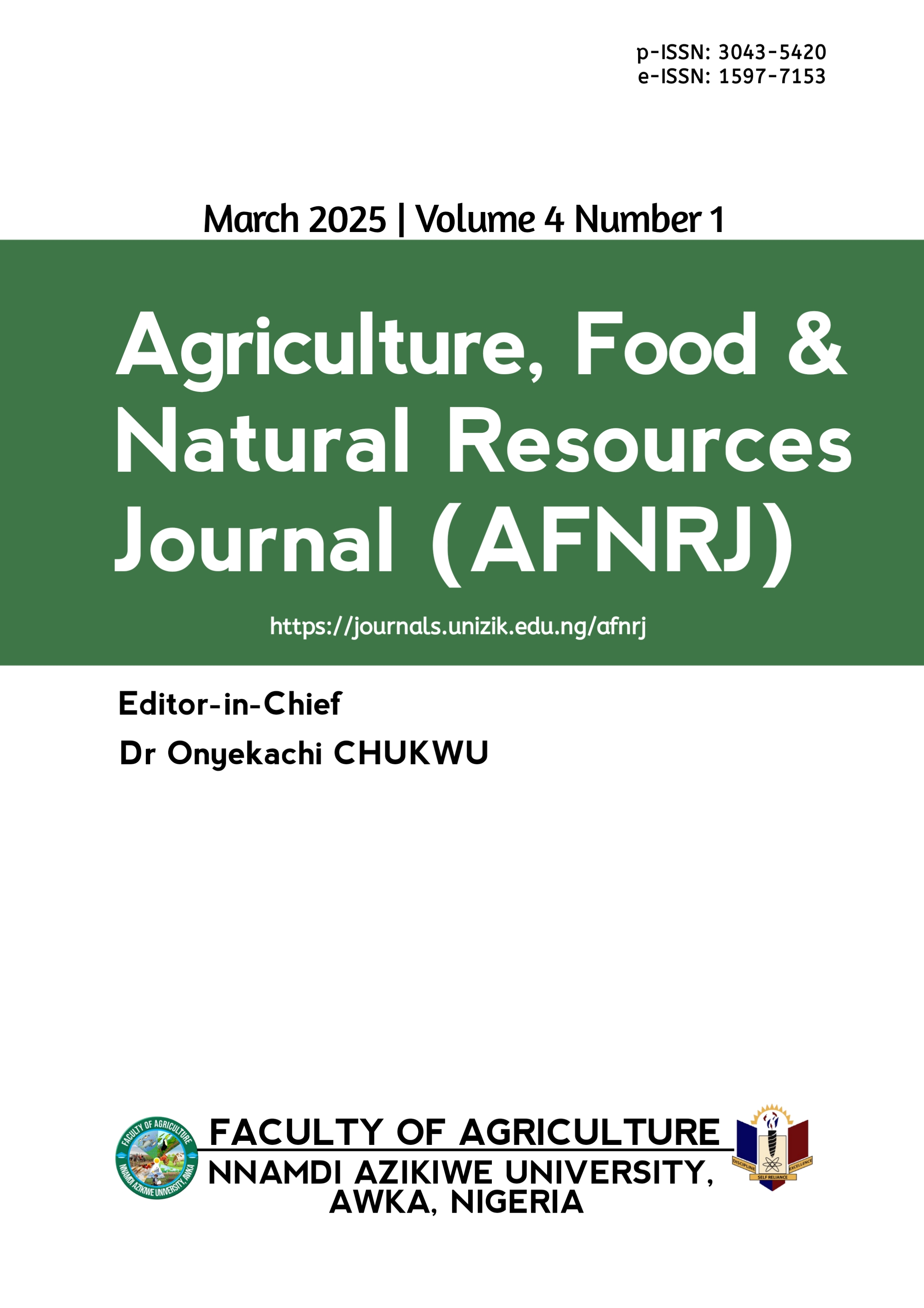Genetic improvement of African catfish (Clarias gariepinus) using Nile perch (Lates niloticus) deoxyribonucleic acid (DNA)
DOI:
https://doi.org/10.5281/zenodo.15109758Keywords:
Aquaculture, Direct intramuscular injection, DNA concentration, Growth performance, GeneAbstract
This study investigates the potential of genetic improvement in African catfish (Clarias gariepinus) through direct intramuscular injection of Nile perch (Lates niloticus) deoxyribonucleic acid (DNA). A total of 225 African catfish fingerlings were divided into five DNA concentrations of 0 μg (T1), 1 μg (T2), 2 μg (T3), 3 μg (T4), and 4 μg (T5) per fish, with each group replicated three times in a completely randomized design. The experiment was conducted in 15 plastic tanks, each holding 15 fish, and the fish were fed a commercial diet for 20 weeks. Data on growth performance were subjected to one-way analysis of variance. The length-weight relationship was analyzed using regression and correlation analysis. Results on growth performance indicated that fish injected with 4 μg of Nile perch DNA showed significantly better (p ≤ 0.05) growth performance, including final body weight (114.59 g), mean weight gain (108.55g), percent weight gain (1802.84%), average daily weight gain (0.78 g/day), and survival rate (84.45%), compared to other groups. The indices of the length-weight relationship "b" values were 0.3564 for T1 (control), 1.2776 for T2 (1 µg), 0.2170 for T3 (2 µg), 0.3686 for T4 (3 µg), and 0.0434 for T5 (4 µg), exhibiting a negative allometric growth pattern (b < 3) across all treatment groups. The correlation coefficients (r) for T1, T2, T3, T4, and T5 were 0.630, 0.597, 0.818, 0.669 and 0.839, respectively. The findings suggest that Nile perch DNA injection can enhance growth parameters in African catfish. The study advocates for further research on optimal DNA dosing and long-term effects in aquaculture.
Downloads
Published
Issue
Section
License

This work is licensed under a Creative Commons Attribution 4.0 International License.
which permits unrestricted use, distribution, and reproduction in any medium, provided the original author and source are credited.
Authors retain the copyright of their published work in the AFNRJ.





